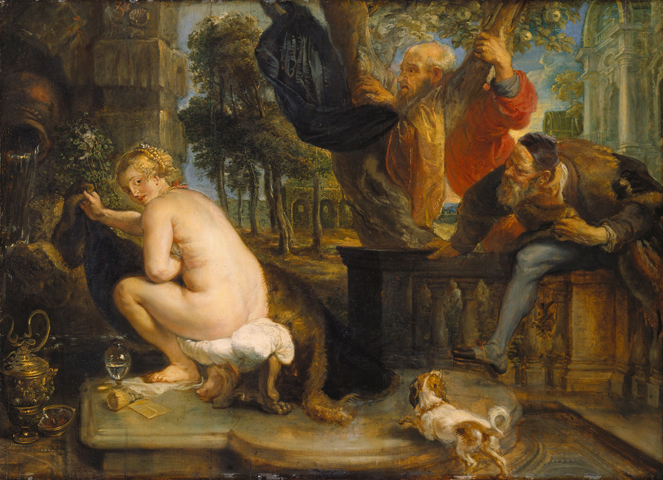Fr : version française / En: english version
mheu, Historical Museum of the Urban Environment
Susanna at her Bath
Pierre Paul Rubens

1636/1639
oil on oak panel
77cm x 110cm
Munich, Alte Pinakothek
© Blauel/Gnamm - ARTOTHEK
View this work in the exhibition Bathing
The work
Susanna at her Bath is a late work of Rubens and reveals all that made his reputation: the flamboyant colors he borrowed from the Venetians (mainly Titian whose work he discovered when he traveled in Italy between 1600 and 1608), and the sensual baroque style, that decorative luxury, that so impressed Renoir. As in Rembrandt's work, Susanna is looking at the viewer who—going by the enthusiasm of the elders, the position of the lady and the ambiguous gesture of her right hand—is about to witness coitus. We are invited. As with Rembrandt, here we are dealing above all with desire and looking, in other words with portrayal.
The artist
Born in Westphalia in 1577—his father had fled Antwerp when Flanders was in the grip of the religious wars—Peter Paul Rubens moved to Antwerp in 1589 where he was an apprentice in various painters' studios. All his life he was to pursue two lines of work simultaneously: painting and diplomacy. The first brought him wealth and fame. His studio in Antwerp was well-known and employed painters who were themselves well-known, like Jordaens, Snyders, and even Anton Van Dyck who was his first assistant between 1610 and 1614. The second brought him the trust of princes (he was involved in bringing peace between England and Spain), to the extent that Marie de Medici, at the end of her life, took refuge in his house in Antwerp where she died two years after him, in 1642.